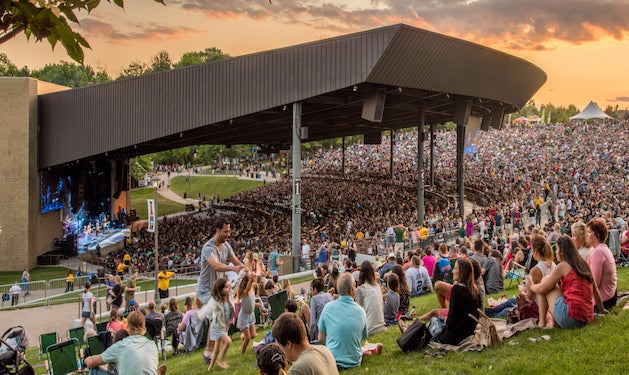"Reporting Live From the Woodstock Music and Art Fair"
Oral History Intern Hannah Riley explains how in the 1960s mainstream media was rejected and what rose in its fall.
At a time of social and political change, the mainstream media excluded critical perspectives on powerful people and institutions. With the youth in angst, counterculture began questioning mainstream media and established news sources. Throughout big cities and over many college campuses, the underground press became an alternative form of news. Beginning in 1965 with only five newspapers, the underground newspaper network quickly grew to over 2,500 by 1975. The newspapers can be found in every region of the country. Mainstream media protected the status quo and steered away from covering social movements. The underground press devoted themselves to reporting on these changes as a form of activism. They became the main form of communication for some movements. For example, to inform, educate, and organize the people the Black Panther Party ran an underground newspaper from 1967-1980.

Aside from social and political activism, the counterculture was open to new ideas. The newspapers wrote about psychedelic interests, featured art and political cartoons, and advertised happenings in the area. These ideas were present at the 1969 Woodstock Festival. Among the crowd of counter-culturists and music lovers were mainstream journalists and news reporters from the New York Times, the Poughkeepsie Journal, and more. During the festival, much of the mainstream media covered the event as a disaster, focusing on the traffic, weather, and drug use. Headlines included “400,000 Flood Site; Rock Crisis Eases Off” from the Times Herald-Record and “Hippies Mired in Sea of Mud” from the New York Daily News. What they missed was the overall spirit of the festival. The spirit and intention of Woodstock were captured through articles from underground newspapers such as The East Village Other and the Rat Subterranean News, both before and after the festival.
The East Village Other was founded in 1967 by Allan Katzman, Walter Bowart, and John Wilcock, who all became well-known authors. When the paper was most popular, it published around 60,000 copies of individual papers. The paper featured columns from various writers and commentators, including counterculturist Timothy Leary who wrote a column titled “Turn On/Tune In/Drop Out” intended to help readers achieve expanded consciousness without the use of drugs (despite its author’s reputation to the contrary).

Whereas the East Village Other represented the counterculture point of view, the Rat leaned to the political left. The Rat was started in 1968 by Jeff Shero, Alice Embree, and Gary Thiher. By the 1970s, the paper was taken over by a group of women who were liberation activists and turned it into a women-only publication that challenged sexism in the New Left.

The East Village Other advertised the Woodstock festival on the front cover of their August 13th issue. The cover depicted a cartoon map of the festival and its surrounding area. It included drawings of guitars and a Catbird, resembling the iconic poster by Arnold Skolnick. The festival was documented by John Hilgerdt who attended for the weekend. In the August 20th issue, he described it as a peaceful and loving atmosphere. He says “There were crowds at times, but it was never crowded. We were all in the same family.” “For the first time, we were free.” Collectivism is the narrative of his story.

The Rat newspaper staff was present at Woodstock and even deputized some attendees to distribute the “Woodstock Special” issue throughout the crowd. A column by Jeff Shero in the August 12-20th issue of The Rat gives a more critical analysis of the festival. Shero begins discussing the commercialism of rock festivals and then proceeds to isolate the Woodstock Festival from this idea. He says “The possibilities after the Woodstock festival are what excite its organizers, not the quick profits which are possible in one fast rake-off.” “Anyone can come, even the poorest street hippy can sleep under the stars and groove.” Given their New Left take on topics, Shero's admiration for the Aquarian Festival is exciting.

The underground newspaper rose quickly with social and political change and disappeared just as fast. By the 1980s most underground newspapers were no longer in business. Today there is a similar parallel to alternative forms of media and rapid social change. Social media platforms like Twitter, podcasts, and YouTube provide “underground” news not featured in mainstream forms of media. Parallel to the 1960s, it is clear to see by our media sources that we live in a time of uncertainty and distrust of mainstream options. The underground press, whether print or digital, challenges and continues to challenge the conventions of journalism and provides new perspectives on social change and counterculture to a broader audience.
Bibliography
Aprea, Jonathan. “The East Village Other.” JSTOR Daily, June 3, 2021. https://daily.jstor.org/the-east-village-other/.
Blake, Meredith. “Ask an Academic: The Sixties Underground Press.” The New Yorker, May 3, 2011. https://www.newyorker.com/books/page-turner/ask-an-academic-the-sixties….
Halley, Catherine. “The Campus Underground Press.” JSTOR Daily, January 6, 2021. https://daily.jstor.org/community-collections-campus-underground-newspa…. Morgan, Jonathan. “Remembering the Black Panther Party Newspaper.” Summer of Love (blog), April 25, 2017. https://summerof.love/remembering-the-black-panther-party-newspaper/.
R. A.T. Publications, Inc. “RAT Subterranean News, February 6-23, 1970.” Roz Payne. Center for Digital Research in the Humanities, University of Nebraska-Lincoln, February 6, 1970. https://rozsixties.unl.edu/items/show/715.
Society, California Historical. “Remembering the Black Panther Party Newspaper.” California Historical Society, February 2, 2023. https://californiahistoricalsociety.org/blog/remembering-the-black-pant…
“Underground/Alternative Newspapers History and Geography - Mapping American Social Movements Project.” Accessed November 1, 2023. https://depts.washington.edu/moves/altnews_intro.shtml.
